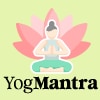Last Updated:
As the body begins to exhibit early signs of ageing, consistent yoga practice offers an effective intervention for maintaining strength, stability, and well-being
Maintaining quality of life and reducing the risk of disease calls for lifestyle changes. (Representative Image)
Your thirties are when you start rethinking your health. It’s not as if everything suddenly falls apart at 30, but things do start to feel a bit different — junk food begins to feel heavier on your system, your jeans begin not to fit, and late nights start to take a toll on the body.
You’re still young, but 30 is definitely a turning point.
According to Harvard Health Publishing – Ageing Overview, the tell-tale signs of ageing often start to show in our thirties — these can be seen in everything from our vital signs like blood pressure to changes in the skin, bones and joints, and the cardiovascular, digestive, and nervous systems. Maintaining quality of life and reducing the risk of disease calls for lifestyle changes.
YOGA WORKS BECAUSE IT TRAINS THE MIND
“Since lifestyle change requires a major shift in mindset, yoga works well because it offers many tools for mind management,” says Dr Nibedita K S, Medical Officer at the Yoga Therapy Centre Arogyadhama, SVYASA, Bengaluru.
We asked her to recommend a set of yoga practices that healthy adults in their thirties could benefit from. She shared a yoga routine that includes breathing exercises, warm-ups, Surya Namaskar, asanas, pranayama, and relaxation.
“The sequence is designed in a way that you prepare your body and mind for a focused practice. That’s why we begin with breathing exercises, so that we have complete focus,” says Dr Nibedita.
While performing the sequence, make sure all practices meet these four important criteria: a) coordinated breathing, b) slow movements, c) complete awareness, and d) relaxation while doing them.
DAILY YOGA ROUTINE FOR YOUR THIRTIES
Begin with a starting prayer
Or simply sit still with your eyes closed in Sukhasana (the Easy Pose) for three minutes. This allows you to set an intention and enter ‘yoga mode’.
Breathing practices
Start with hand-stretch breathing and ankle-stretch breathing for one minute each. These improve your vital capacity (oxygen saturation).
Add tiger breathing (cat-cow stretch) for another minute, for deeper benefits.
Relax for a while. You could practise the Instant Relaxation Technique if you’re familiar with it.
Loosening exercises – 5 minutes
Warm up your body with these gentle movements.
Start with the neck and move downwards. Move your neck left and right, up and down, and rotate it clockwise and anticlockwise — three times each. Bend from your waist forwards and backwards, left and right, and twist once on either side. Bend and unbend your knees. Move your ankles and toes back and forth.
Surya Namaskar – 5 minutes
This set of poses combines asanas with breathing. Perform it three times. Then relax for a few minutes. Use the Quick Relaxation Technique if you know it.
Asana Sequence – 20 minutes
These poses help to strengthen and stretch the muscles and increase oxygen saturation. Ensure you practise the asanas with your attention on the body, coordinating movement with breath, and observing the effects of each posture. Remember to relax after each asana.
- Standing asanas: Start with Ardha Chakrasana (Half Wheel Pose). Follow with Pada Hastasana (Standing Forward Bend). Finish with Trikonasana (Triangle Pose) on both the left and right sides.
- Sitting asanas: Start with Ustrasana (Camel Pose), once. Then do Vakrasana (Simple Spinal Twist Pose) on both sides.
- Prone asanas (lying on your belly): Start with Bhujangasana (Cobra Pose). Follow with Shalabhasana (Locust Pose), once each with either leg. Then practise Dhanurasana (Bow Pose).
- Supine asanas (lying on your back): Start with Matsyasana (Fish Pose). Follow with Naukasana (Boat Pose). Then do Markatasana (Reclining Spinal Twist).
End the session with any Conscious Relaxation Technique for eight minutes. Practice the Deep Relaxation Technique if you’re familiar with it.
Pranayama Sequence – 15 minutes
Follow the asana sequence with the following pranayama routine:
Pranayama helps increase oxygen saturation, manage stress, and improve sleep quality.
- Nine rounds of Anulom Vilom (Alternate Nostril Breathing or Nadi Shuddhi)
- Twelve rounds of Ujjayi Pranayama (Victorious Breath or Ocean Breath)
- Two minutes of Bhastrika Pranayama (Bellows Breath) at 20–30 strokes per minute
- Five rounds of Bhramari Pranayama (Bee Breath)
End with three minutes of Om chanting, maintaining inner focus.
Meditation
Finally, meditating for ten minutes, at least every alternate day, is recommended.
(Note: The information in this article is generic. Please consult your healthcare provider if you have health issues, and before starting any Yoga regimen. Always learn Yoga from a qualified and experienced teacher.)
The author is a journalist, cancer survivor and certified yoga teacher. She can be reached at swatikamal@gmail.com.
- First Published:



